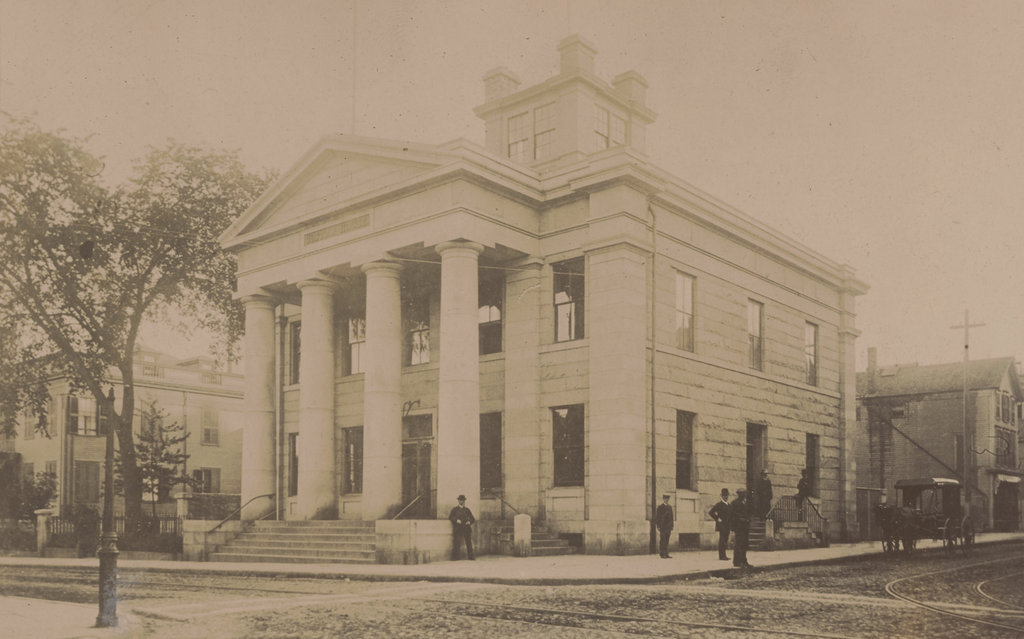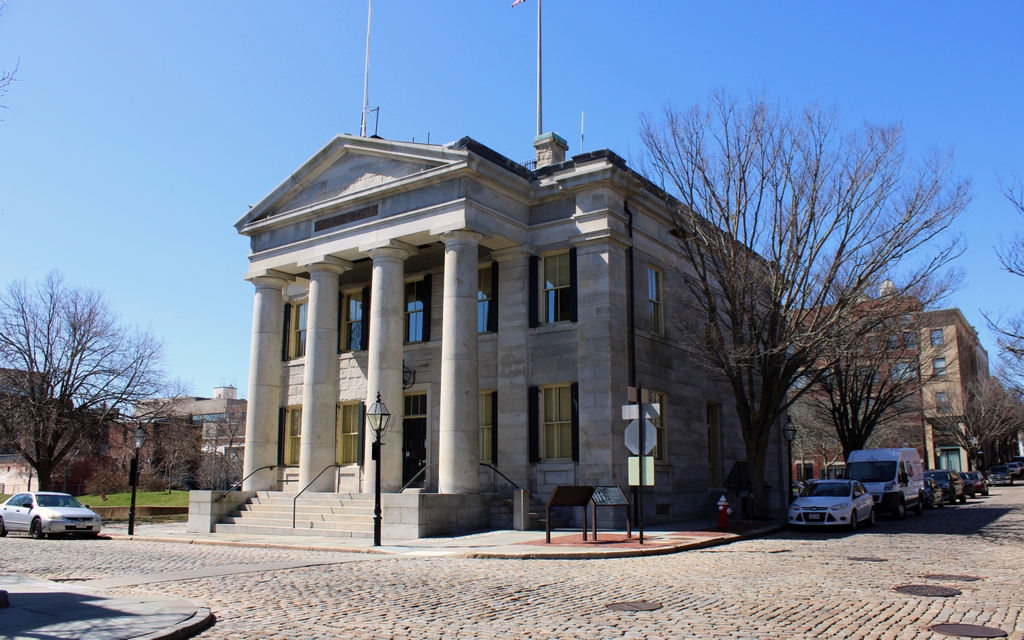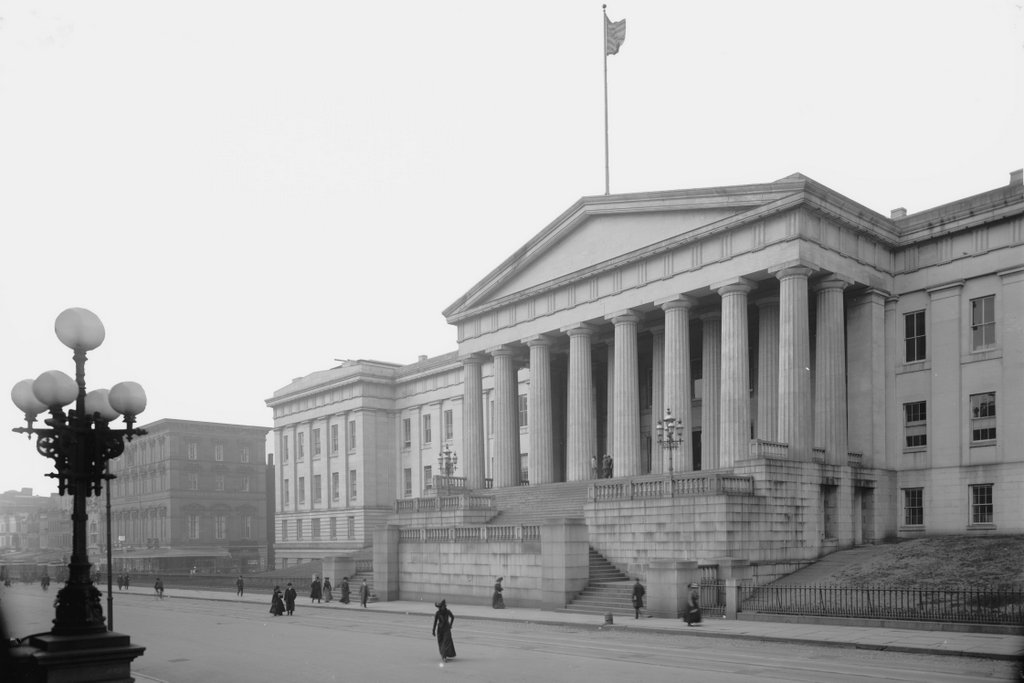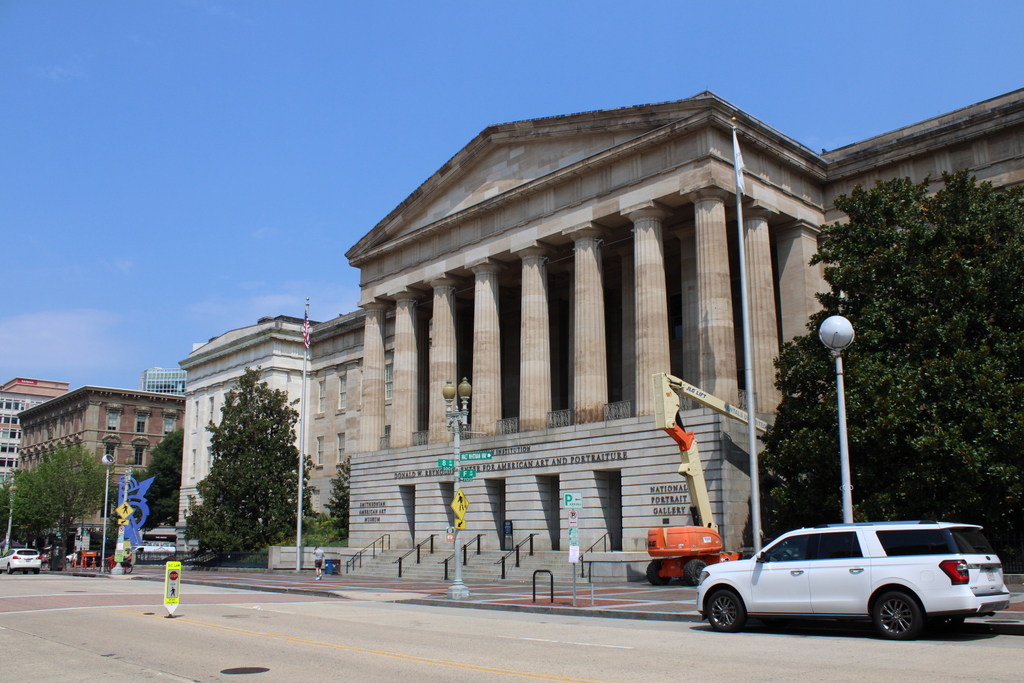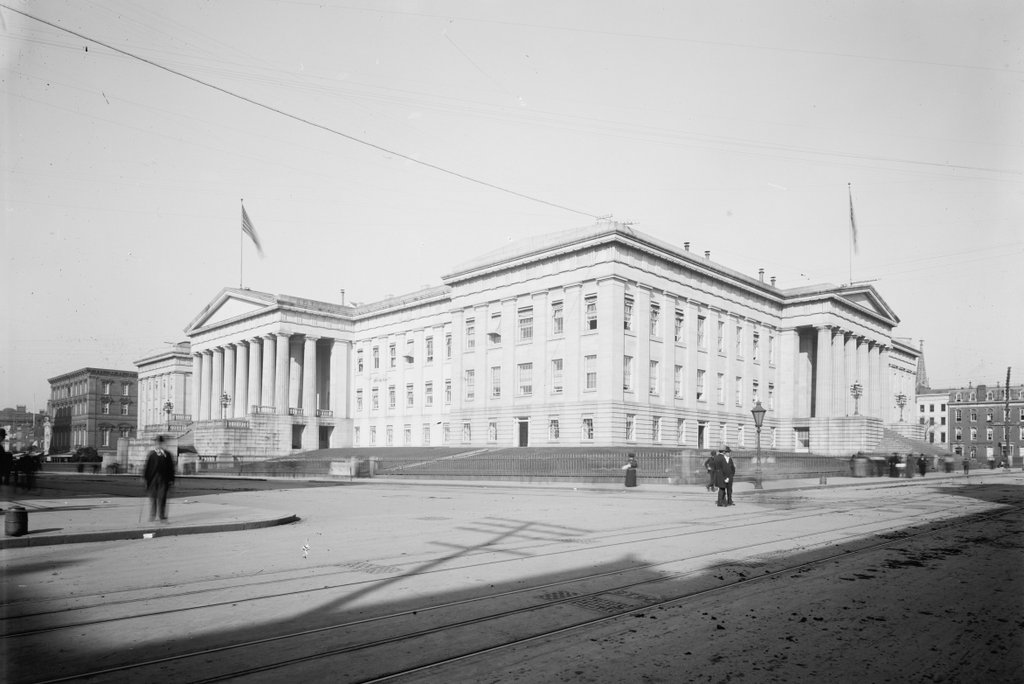The New Bedford Custom House at the corner of William Street and North 2nd Street in 1886. Image courtesy of the New Bedford Free Public Library, Gilbert D. Kingman Photograph Collection.
The scene in 2022:
During the first half of the 19th century, New Bedford was a major whaling port. It grew prosperous from the industry, leading to the construction of many historic buildings that still stand today. Among the most architecturally significant of these is the Custom House, shown here in these two photos. The building was designed by noted architect Robert Mills, and it was completed in 1836. Although relatively small in size, the building is a good example of Greek Revival architecture, which was a popular style for public buildings of this era.
The Custom House played an important role during New Bedford’s heyday. It was here that whaling captains, along with those of other incoming merchant vessels, would register their cargoes with customs officials. It was also here that sailors could obtain protection certificates. At the time, British warships would often stop American vessels and force sailors into the Royal Navy. These certificates could be presented as proof of American citizenship, which would, in theory, serve as a deterrent to Royal Navy ships that were searching for sailors.
This building served as the main offices for the District of New Bedford, which was responsible not only for the port of New Bedford, but also for the nearby ports of Fairhaven, Rochester (modern-day Mattapoisett and Marion), Wareham, Dartmouth, and Westport. In short, this district covered the communities along the northeastern shore of Buzzards Bay. By the mid 19th century, this was one of 11 customs districts in Massachusetts, some of which were centered around major seaports such as Boston, Salem, and New Bedford. However, there were also customs districts that were much smaller, including Fall River, Plymouth, and Edgartown.
In general, the more important the district was, the larger the number of customs officials appointed to it. For example, by the 1850s the District of Boston and Charlestown employed over 175 men. At the top of the hierarchy was the collector, and he was assisted by a variety of clerks, measurers, inspectors, appraisers, and other officials. However, by contrast the districts of Marblehead, Gloucester, Nantucket, and Edgartown were each staffed by just a single inspector.
Compared to these two extremes, New Bedford was somewhere in the middle. When this building first opened in 1836 it had a collector, a deputy collector, a clerk, an inspector/boarding officer, and an inspector/gauger/weigher. Each of the other five ports also had either one or two inspectors assigned to it, and there was also a revenue cutter, the McLane, that was assigned to the district. Here at the New Bedford custom house, the building was open six days a week, from 9:00 a.m. to noon, and then from 2:00-4:00 p.m. It was closed on Sundays, and also on July 4.
At the time, the collectors of each district earned a percentage of all import duties that were collected, along with a percentage of the fines that were imposed. This gave the collector an incentive to do his job well, and it also made these positions highly sought after. And, in the days of the spoils system, an appointment as collector of a major port was a way for newly-elected presidents to reward their loyal supporters with lucrative federal offices. Here in New Bedford, for example, the collector when this building was completed was Lemuel Williams Jr. He had been appointed by Andrew Jackson in 1829, replacing an earlier collector, Russell Freeman. This sparked considerable controversy, and the two men are said to have ended up in a fistfight in the streets of New Bedford.
The first photo was taken 50 years after the building was completed, in 1886. By this point, New Bedford’s whaling industry was in decline, but it otherwise remained a busy port. This would remain the administrative headquarters of the customs district until 1913, when the federal government consolidated the many different districts around the country. As a result, all of the districts in Massachusetts were combined into a single one, although some of the customs offices, including this one in New Bedford, would remain open as satellite offices.
Today, the surrounding buildings from the first photo are gone, but the custom house itself is still standing. It has seen a few changes over the years, including the removal of the cupola, which had been added around 1850. Overall, though, it is well preserved in its historic appearance, and it is still actively used as offices for U.S. Customs and Border Protection. It is a contributing property in the New Bedford Historic District, which was designated as a National Historic Landmark district in 1966, and it is also a part of the New Bedford Whaling National Historical Park.

